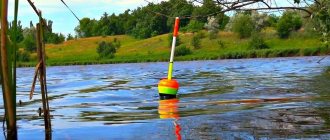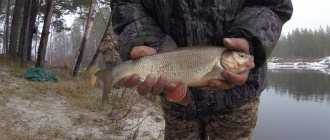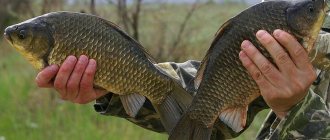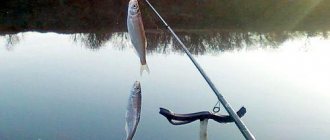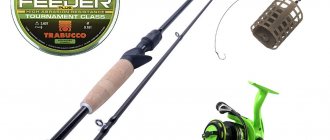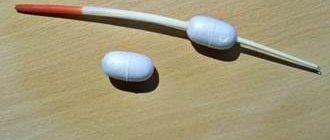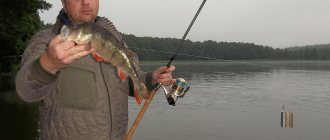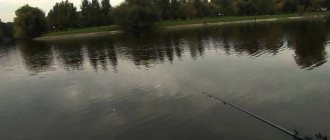It is rare to catch a silver bream of this weight, but it does exist, especially in large reservoirs and lakes.
In appearance, it is very similar to a small bream, which is why the silver bream is often confused with the white bream. This fish differs from bream in having larger eyes and scales. The pelvic fins of the silver bream are characterized by a pinkish-red tint, and the caudal fin is not as sharp as that of the bream.
White bream is caught along with other types of fish, such as bream, rudd, etc. Although there are fishermen who are only interested in silver bream.
Where is silver bream caught?
The silver bream can inhabit any type of water body, such as rivers, lakes, and reservoirs. In rivers, the silver bream sticks more to deep places with a calm current, so it can be found in bays or creeks, with a silt-sandy or clay bottom. If there is information about the nature of the bottom of the reservoir, then the places of exit from the pits are the most favorite places for the silver bream. In this case, you can count on an active bite.
The silver bream is not such a shy fish, unlike other fish species, and is not afraid of noise on the shore or the silhouettes of fishermen. Therefore, it can be found directly near the shore and caught with a regular float rod. At the same time, larger specimens are still more cautious and rarely come close to the shore.
Prefers to be near steep banks or under trees hanging over the water. The silver bream gathers in numerous flocks, which is why it got its name. If you find a flock of silver bream, you can rejoice at a good catch. With the arrival of cold weather, the silver bream goes deeper and can remain there until the arrival of spring. With the onset of spring, she immediately returns to her favorite places.
Fishing calendar
The fish is quite active all year round, so creating a fishing calendar for silver bream is not particularly difficult. I suggest you familiarize yourself with it; if you click on the image, it will enlarge. And below you can see the blue bream biting forecast for the whole year, divided by month, for your convenience.
January
In January, the white bream bite is very weak and quite unstable. But if you can experience a thaw in your region this month, then catching silver bream will not be difficult.
February
In February, silver bream, like all fish, is rather inactive. But you can see her biting, although very rarely.
March
- In the first half of March : flocks of silver bream leave their wintering grounds, but only small fish can be seen in the catch.
- In the second half of March : the bite increases sharply in mid-March and the fish begin to come out to feed in the shallows.
April
- In the first half of April : you can run into a large school of fish that grabs absolutely everything. It's best to fish from the bottom.
- In the second half of April : probably the most promising and successful time for fishing. The catches delight the fishermen with big fish.
May
- In the first half of May : the fish are preparing for spawning and bite very well, especially on animal baits.
- In the second half of May: the bite practically stops due to the start of spawning of the silver bream.
June
- In the first half of June: there is no stable bite, since the silver bream is actively spawning, and it is almost impossible to predict its behavior during spawning.
- In the second half of June: spawning stops and the fish bite becomes stable. Immediately after the completion of spawning, the silver bream begins to actively peck.
July
It is quite hot in July, so it is worth looking for fish in the depths. She bites quite actively, but only early in the morning and late in the evening. During the heat of the day, the silver bream practically does not feed.
August
- In the first half of August: in good weather, the bite of silver bream can only be envied; the probability of catching large fish is quite high.
- In the second half of August: the bite is still quite good and the fish are already beginning to form large schools, which can be found for some great fishing.
September
There will no longer be an active bite, but there are still quite a lot of fish in the deep holes and they bite steadily, albeit sluggishly.
October
Short bursts of strong gusts of white bream bite in October occur quite often. As the water temperature decreases, the fish completely move into deep places.
November
With the onset of autumn cold weather, the bite decreases significantly and the capture of silver bream becomes a rare, isolated occurrence.
December
- In the first half of December: catching fish is very rare, the bite is sluggish and inconsistent.
- In the second half of December: the silver bream goes to winter and the bite practically stops.
What is used to catch silver bream?
White bream is an omnivorous fish and does not require special bait. It is perfectly caught using maggots, regardless of the nature of the reservoir. At the same time, other baits also show good results. It can be caught using the same baits that are used for catching roach or bream. And it’s not surprising, because when you catch bream or roach, you will certainly get hooked on a silver bream. Therefore, it is unlikely that you will be able to catch one silver bream, unless perhaps only this fish is caught in the reservoir.
White bream can be easily caught using the following baits:
- maggot;
- dung worm;
- crawling out;
- bloodworm;
- dough;
- pearl barley
As a rule, silver bream is caught using baits of animal origin in spring or autumn, when the fish needs high-energy food. It is preferable to use bait of plant origin in June-July, when the water has already warmed up and food of animal origin is not so in demand.
With the arrival of autumn, the silver bream, like all types of fish, begins to gradually switch to animal food, stocking up on fat for the winter. At the same time, it can also be caught on plant baits, especially during periods of warming. In the summer, with the appearance of various insects, the silver bream perfectly takes on a grasshopper or butterfly. Sometimes she won't refuse small pieces of fish. The guster resolutely swallows the bait, without even requiring hooking.
The bite can become noticeably more active if bait is used. Moreover, the same porridge is suitable as for catching roach or bream. Any porridge mixed with soil or clay, as well as bloodworms, can be suitable. Bait can enhance the effect if dusty components such as milk powder or breadcrumbs are added to its composition.
How to choose a place to catch silver bream?
If you decide to catch white bream, all that remains is to find it. This fish is found almost everywhere - from the river to the reservoir. If fishing takes place on a river, you need to choose a deeper area with a not very strong current. A muddy, sandy bottom, large holes, and dense trees on the shore are an ideal place for this fish to stay, hence its name. As soon as severe frosts set in, the fish go closer to the bottom, where they wait for the beginning of spring.
What should you use to catch silver bream, how should bait be used?
This fish is completely unpretentious in food, somewhat reminiscent of crucian carp or perch, so almost everything is enough. But the most common bait is still maggots. In addition, you can use dough, pearl barley, worms, bloodworms. In many ways, the bait you need depends on the season. With the onset of spring, fish require a large amount of protein, so the ideal option would be animal bait, such as a worm, bloodworms or maggots. Closer to summer, when there are a lot of insects in the water, you can try switching to porridge. In addition to all the baits mentioned above, it makes sense to try a butterfly or grasshopper.
Closer to autumn, the silver bream, like almost all fish, begins to bite especially actively, since the fish need to prepare for winter and accumulate fat. During this period, animal bait should be used, but if autumn occurs at warm temperatures, the fish will readily grab the porridge. In different bodies of water, fish grab certain food. It is best to use bait. Almost any cereal plant will do, to which you should add chopped worms, maggots or bloodworms.
When is silver bream caught?
You can catch this fish at any time of the year, except during spawning, of course. High activity begins as soon as the ice melts. The silver bream will bite well until it goes to spawn; the bite will resume by the beginning of summer.
DIY bait for catching silver bream in summer and other seasons
Bait when fishing is one of the most important conditions for successful fishing. Therefore, it is very important to choose the right recipe that can perfectly attract fish, but most importantly, also keep it on point so that the bite maintains its intensity throughout the entire period of fishing. I would like to share some recipes, and if you know even more effective bait options, write them in the reviews under the article .
In the video you can see how bait works to attract fish.
What gear is used for catching silver bream?
A very important factor for choosing gear is the weather and the place to fish. When fishing from the shore, most fishermen use a classic float rod. A donka works great from a boat. Since the fish is light in weight, a thick fishing line is not useful, and there is a huge probability of bream biting; for this reason, a diameter of 0.3 millimeters should be used. As for the hook, most people use number 5, there is no need for a large hook, the mouth of this fish is not very large.
When is silver bream caught?
You can catch this fish all year round. As soon as the reservoirs are freed from ice, the silver bream begins to actively peck, gaining strength after wintering. This period lasts until she leaves for spawning. Having spawned and rested a little, the silver bream again begins to hunt for bait. This period begins from the end of May, beginning of June and continues until the real cold. After the reservoir is covered with ice, silver bream continues to be caught, but with different winter gear.
Throughout the day, the silver bream bites almost equally, both during the day and at night. During the day, mostly small silver bream are caught, and early in the morning and evening, as well as at night, large individuals begin to approach the shore. At the height of the summer heat, there may be no daytime bite at all, but early in the morning or late in the evening you can try your luck. On such days, it is better to switch to night fishing for silver bream, and in the daytime it is better to rest somewhere in the shade.
Spawning
Spawning takes place in two or three portions with a break of 10-15 days. The diameter of the eggs decreases with each hatch and varies from 1.2 to 0.2 mm. The total number is 11-109 thousand eggs. In artificial reservoirs, the number of servings decreases, and some females switch to one-time spawning. Spawning time is late May-early June. Duration – from one to one and a half months. The eggs adhere to the flooded vegetation, and the larvae appear after four to six days. At first, the juveniles feed on zooplankton and phytoplankton, and then on small benthic forms. The silver bream grows slowly, reaching sexual maturity at the age of 3-4 years.
Tackle for catching silver bream
To catch this fish, you can use classic tackle with a float or feeder, that is, tackle for catching fish from the bottom. In this case, the fishing tools are chosen by the fisherman, depending on the nature of the reservoir. If fishing is carried out on a river and there are steep banks, then it is better to fish from a steep bank with a float. And from a gently sloping shore it is better to use bottom tackle to cast the bait to depth.
As for such elements of gear as a fishing rod, fishing line and hooks, there are no special requirements, since the silver bream is a small fish and there are no special problems when catching it.
The silver bream is not a timid fish and does not pay much attention to the thickness of the fishing line. Therefore, it can be easily caught with rough gear. This is very important, since next to the silver bream there may also be bream, which can be of impressive size. If he is interested in the bait, he can easily swallow it. If the tackle turns out to be weak, then it will be much more difficult to cope with the bream. In this regard, there must be a safety margin for the gear.
The optimal gear option for fishing for silver bream may be:
- fishing line with a diameter of 0.25-0.3 mm;
- hooks No. 5-6;
It is not recommended to use hooks larger than size 6 due to the small mouth of the silver bream. There is a possibility of false bites due to the fact that it is not able to swallow the bait properly. The fifth hook number will be just right, but, again, it all depends on the nature of the bait. In addition, a small hook will attract more “trifles”. Moreover, if we take into account the factor that bream can bite, then number six is preferable.
Lures and groundbait
The best bait for catching silver bream in the spring is maggot. It is this bait that shows the best results on most bodies of water. In second place is a regular worm; this bait is less effective, but in the absence of maggots, it will also work. During spawning, the silver bream may peck at steamed wheat and pearl barley.
It is usually not necessary to feed the silver bream at this time, but still, on cloudy days, bait can be used to activate the bite. You can take regular bream bait, but if you don’t have one, you can prepare it yourself.
White bream, like bream, loves the presence of peas in its bait. It is not advisable to use bran, as it can attract small fish; for the same reason, you should not prepare dusty mixtures. The best homemade composition would be steamed peas, with the addition of various cereals for gluing the bait mixture.
If you decide to use bait, having found a promising place, you need to feed below the fishing spot so that the equipment takes its working position exactly on the spot.
Tackle
Winter tackle for silver bream should be the thinnest. The fishing line used is 0.08-0.12 mm, the fishing rod is equipped with a float or a light nod. It is better to take small or medium jigs; fishing is done from the bottom. It will be great if the color of the jig differs from the color of the nozzle. You can try to equip the fishing rod with several jigs of different colors, shapes and weights, with a distance of at least 12 cm between them.
In the summer, you can save the caught silver bream in a wire cage lowered into a deep shady place.
Catching
The most active bite is observed immediately after the end of spawning - from mid-May to early summer. At this time, silver bream is excellently caught with any gear from morning to evening, but the best time is early morning and evening after sunset. In the morning and evening, flocks of silver bream come closer to the shore , where they actively feed at shallow depths (up to two meters).
In the middle of the day and late at night, the best results will come from fishing with bottom or feeder gear further from the shore (20-40 m) at depth. A variety of donkey options (feeder, spring, roller, rubber shock absorber) are very effective, since the silver bream is a bottom-dwelling fish and almost always feeds in the lower layers of water. The nozzle should lie on the bottom or be located near it.
Fishing with a float rod in quiet places with weak or no current (backwaters, pockets with aquatic vegetation and a more or less clean bottom) also brings excellent results.
Fishing for silver bream
Gustera loves not only large lowland rivers, but also often lives in small rivers. This is a schooling fish, and is found in the same places where bream lives. Ideal fishing spots are where calm water meets the current.
We recommend: Roach, description of the fish, lifestyle, what and how to catch
They do not like places with fast flowing water, as their body is not designed to swim in such places.
In the lake, you should look for it in quiet bays with a sandy or muddy bottom and protected from the wind. They can be found near coastal thickets and water lilies. Often accompanied by species such as roach, bream and rudd.
You can catch silver bream starting in early spring; the best results occur from July to September; good bite occurs in late autumn.
It practically does not feed during spawning, usually from April to the end of May and possibly in the first half of June; at this time it is useless to catch.
A good bite begins immediately after spawning.
Fishing can be done almost around the clock, but it is most active at dawn and dusk.
Main lures:
Maggot, pearl barley, worms and other baits that are suitable for bream.
Groundbait:
All baits are suitable for bream, roach and carp.
Fishing methods:
Float rod, feeder and donka. The gear is the same as for medium-sized bream up to half a kilogram. The methods and fishing are similar to bream fishing.
Share link:

